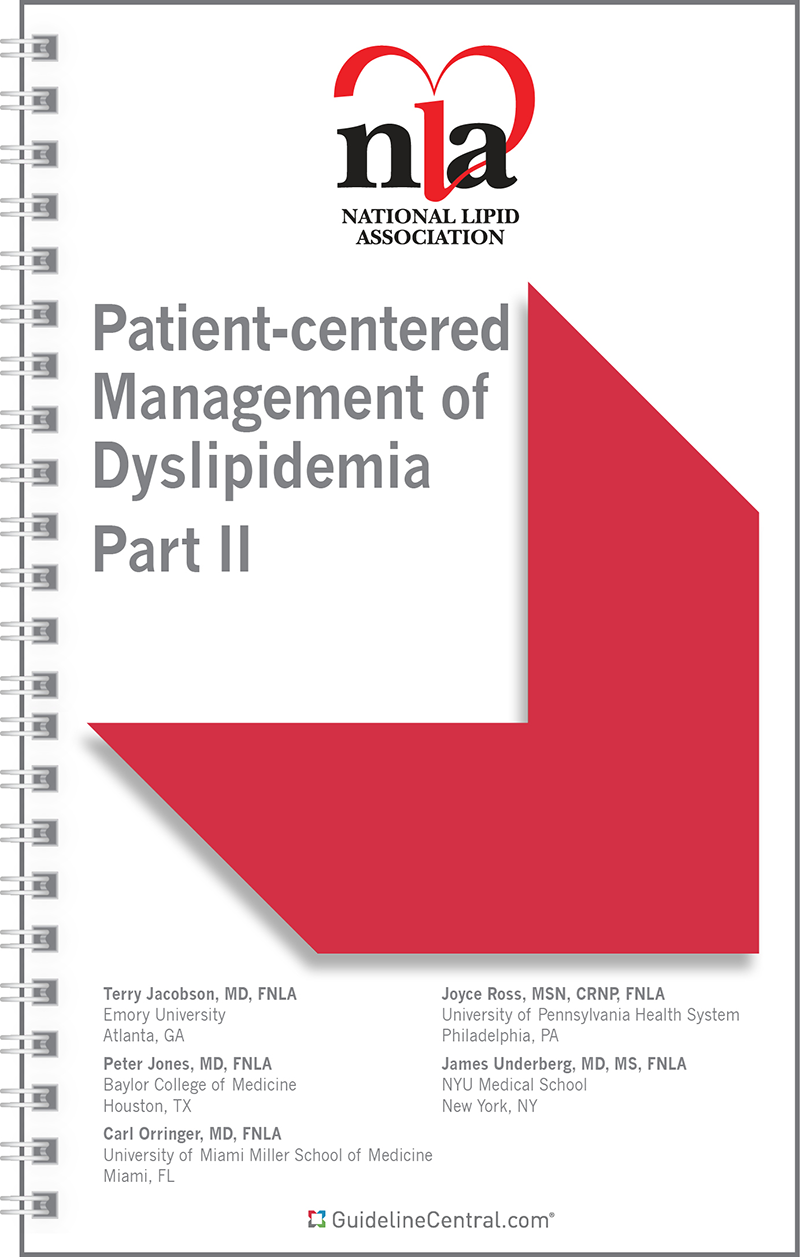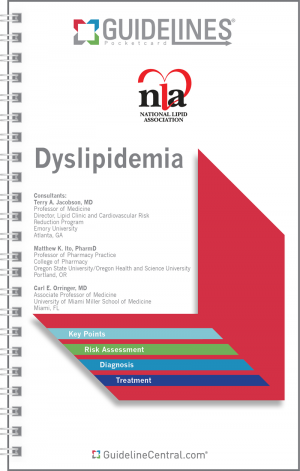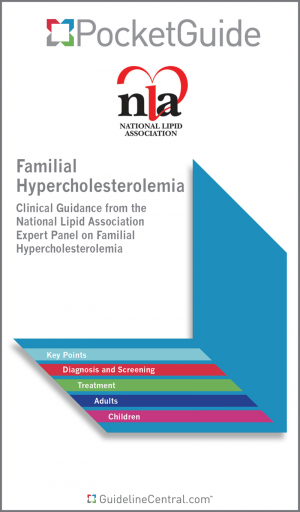Patient-Centered Management of Dyslipidemia: Part 2
- 38 pages
- Spiral Bound
- 80# Aqueous Coating
- 4.25" x 7.25"
- Ships in 5 – 10 business days
- Key Points
- Lifestyle
- General Management
- Hypertriglyceridemia
- Children and Adolescents
- Special Populations
- Women’s Health
- Older Patients
- Ethnic Groups
- Concurrent Conditions
- Residual Risk After Statins and Lifestyle Modification
- Charts
- Nutritional Recommendations
- Exercise/Physical Activity Recommendations
- Patient Adherence
- Team-Based Collaborative Care
- Figures
- Clinical Algorithm for Screening and Management of Elevated TG
- Dyslipidemia Algorithm Targeting LDL-C from the 2011 Expert Integrated Guidelines for Cardiovascular Health and Risk Reduction in Children and Adolescents
- Statin Combination Therapy
- Tables
- Criteria for ASCVD Risk Assessment, Treatment Goals for Atherogenic Cholesterol, and Levels at Which to Consider Drug Therapy
- Changes from Baseline Lipoprotein Lipid Levels by Diet in Omniheart
- Predicted Effects of Macronutrient Replacement of Dietary Saturated Fatty Acids with PUFA, MUFA, and Carbohydrate on Lipoprotein Lipids Based on Results from Controlled Feeding Trials
- Evaluation of Hypertriglyceridemia
- Nutrition Therapy for Very High TG (≥500 mg/dL)/Chylomicron Clearing
- Acceptable, Borderline-high, and High Plasma Lipoprotein Lipids and Apolipoprotein Concentrations for Children and Adolescents
- Major Risk Factors and Conditions in Children and Adolescents
- International Diabetes Federation’s Definition of the At Risk Group and Metabolic Syndrome in Children and Adolescents
- Lipid Lowering Agents and Pregnancy Categories
- Criteria for Diagnosis of PCOS
- Interactions Between ART and Statins
- RA Treatments with Manufacturer Package Inserts Recommending Frequency of Lipid Measurements
- Significant Risk Indicators
- Recommendations
- Statin Combination Therapies (Clinical trial results)
- For purchases under 100 in quantity, we suggest placing the order directly through the website.
- We offer group/institutional licenses for multi-user accounts (discount amount varies depending on the number of users).
- We are proud to offer special discounts to medical schools, training programs, students and more.
- We offer bulk purchase discounts based on number of copies and number of titles.
Contact Us for more details
Description
This resource is for informational purposes only, intended as a quick-reference tool based on the cited source guideline(s), and should not be used as a substitute for the independent professional judgment of healthcare providers. Practice guidelines are unable to account for every individual variation among patients or take the place of clinician judgment, and the ultimate decision concerning the propriety of any course of conduct must be made by healthcare providers after consideration of each individual patient situation. Guideline Central does not endorse any specific guideline(s) or guideline recommendations and has not independently verified the accuracy hereof. Any use of this resource or any other Guideline Central resources is strictly voluntary.


